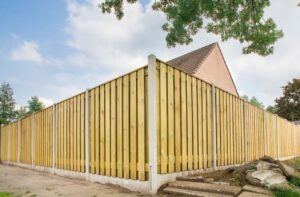History About Quincy, Massachusetts
Quincy, Massachusetts is a historic city located on the South Shore of Massachusetts. With a population of over 90,000, Quincy has a rich history dating back to the early 17th century. Here is an in-depth look at the history of Quincy, Massachusetts.
Native American Settlement
The area now known as Quincy was originally inhabited by the Massachusett tribe. The Massachusett people lived along the coast of Massachusetts Bay and inland along the Neponset and Charles Rivers.
In the 1620s, English settlers began arriving in the area and establishing settlements. This led to tensions and conflict with the native Massachusett people as the English colonists claimed more land. In 1633, the Massachusett people had their first formal meeting with the colonists and agreed to sell some of their land to them.
Early Settlement by English Colonists
The first English settlement in the area was established in 1625 by Captain Wollaston and was named Mount Wollaston. It was located near present-day Quincy Center. In 1635, a Puritan minister named Thomas Morton renamed the settlement Merrymount.
However, Puritans in the nearby settlement of Boston disapproved of the libertine practices in Merrymount, so in 1630 they sent Miles Standish to formally claim the settlement for the Massachusetts Bay Company. The area was then incorporated as the town of Braintree.
Founding of Quincy
In 1792, the northern part of Braintree split off to form the separate town of Quincy. It was named after Colonel John Quincy, grandfather of Abigail Adams.
Quincy grew quickly during the 19th century. The Granite Railway was one of the first commercial railways in the United States and connected Quincy to the Neponset River in 1826. This allowed the transportation of granite from Quincy’s quarries for construction projects throughout the growing country.
Quincy’s Granite Industry
Quincy granite became famous throughout the United States. The granite was used to build famous structures like the Bunker Hill Monument, the U.S. Custom House in Boston, and even New York City’s Trinity Church. Quincy was officially nick-named the “Granite City” in the 1830s.
Some notable quarries and granite companies from Quincy’s history include:
- Baker Quarry
- City Point Granite Works
- Granite Railway Company
- Pollard & Swallow Granite Co.
- Rockland Granite Co.
At its peak in the early 1900s, there were over 300 commercial quarries in the city of Quincy. The last active quarry closed in the 1960s, but the city maintains its “Granite City” nickname to this day.
19th Century Population Growth
Quincy’s population rose rapidly in the mid-1800s. The population grew from 2,500 in 1845 to over 9,000 in 1850. By 1875, Quincy had over 10,000 residents.
Several factors drove Quincy’s quick population growth in the 1800s:
- Thriving granite industry brought jobs to the city
- Irish immigrants came to work in the quarries
- Wealthy Boston families built summer homes along Quincy’s coastline
- Improved transportation like the new railway increased access
Political Leadership
Quincy has been home to several important political leaders, including two Presidents of the United States:
John Adams
John Adams was born in Braintree in 1735. He served as a lawyer, diplomat, Vice President and the 2nd President of the United States from 1797-1801. The John Adams birthplace in Quincy is now part of the Adams National Historical Park.
John Quincy Adams
John Quincy Adams was John Adams’ son and the 6th President of the United States. He oversaw the expansion of the country westward to the Pacific. His birthplace is also part of the Adams historical park.
Josiah Quincy, Jr.
Josiah Quincy, Jr. was mayor of Boston from 1823-1828 and oversaw the major landfill projects that transformed Boston’s coastline. He was also President of Harvard University from 1829-1845.
Immigrant Influx in the Early 1900s
In the early 20th century Quincy saw another population boom, this time fueled by Italian immigrants settling in the area. Italian immigrants worked in the granite quarries and also established small businesses like restaurants, bars and grocery stores.
Key facts about Italian immigration to Quincy:
- Peak immigration was between 1900-1920
- By 1930 over 6,000 Italian immigrants lived in Quincy
- Families created social clubs like the Quincy Sons of Italy lodge
- Saint John the Baptist Church was an important center for the Italian community
Economic Changes in the 1900s
After World War II, Quincy’s economy started to shift away from the declining granite industry. By the mid-1900s, education, manufacturing and financial services became major employers in Quincy.
Some notable companies with history in Quincy include:
- Fore River Shipyard – built Navy destroyers and oil tankers
- Howard Johnson’s – roadside restaurant chain started in Quincy
- State Street Bank – major financial services company based in Quincy
Quincy also grew as a residential commuter suburb for the city of Boston. Its population exceeded 90,000 by 1970.
Historic Sites to Explore Quincy’s History
If you want to learn more about the history of Quincy, Massachusetts, there are many great historical and cultural sites to visit, including:
- Adams National Historical Park – The birthplaces and homes of Presidents John Adams and John Quincy Adams.
- Quincy History Museum – Museum with artifacts and exhibits on Quincy history.
- United First Parish Church – Church where both John Adams and John Quincy Adams are buried.
- Granite Railway – Site of one of America’s first railways, used to transport Quincy granite.
- Saint John the Baptist Church – Catholic church that was the center of Quincy’s Italian community.
Conclusion
In summary, Quincy, Massachusetts has a rich history spanning nearly 400 years. From its Native American roots to colonial settlement, prominence as a granite producer, waves of immigration, and economic evolution, Quincy reflects the story of New England and the United States. Exploring historic sites in Quincy is a great way to connect with this unique heritage. The city continues to progress while also preserving its history into the 21st century.
Hours
Monday: 9:00 AM – 5:00 PM
Tuesday: 9:00 AM – 5:00 PM
Wednesday: 9:00 AM – 5:00 PM
Thursday: 9:00 AM – 5:00 PM
Friday: 9:00 AM – 5:00 PM
Saturday: 9:00 AM – 5:00 PM
Sunday: 9:00 AM – 5:00 PM
Contact Us.
Get Solutions For All Fencing Services
Every day from
9:00 — 5:00
Call to ask any question





